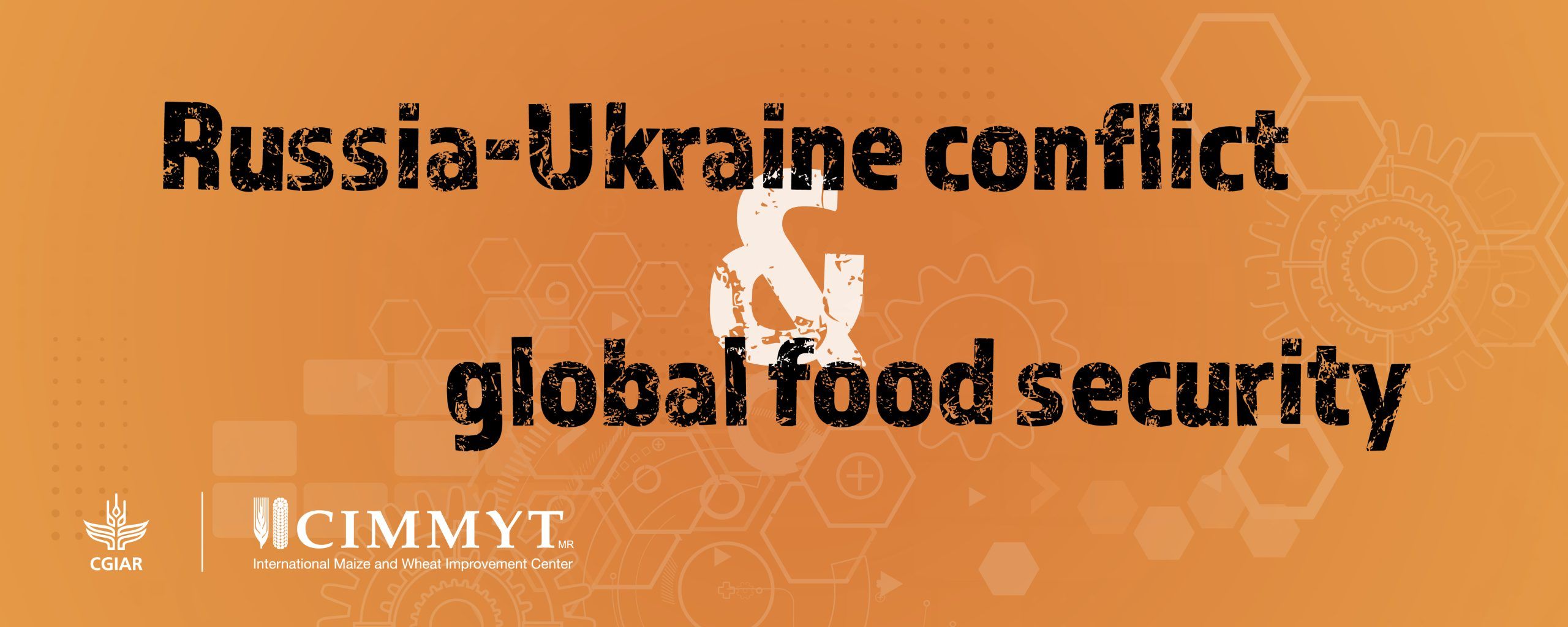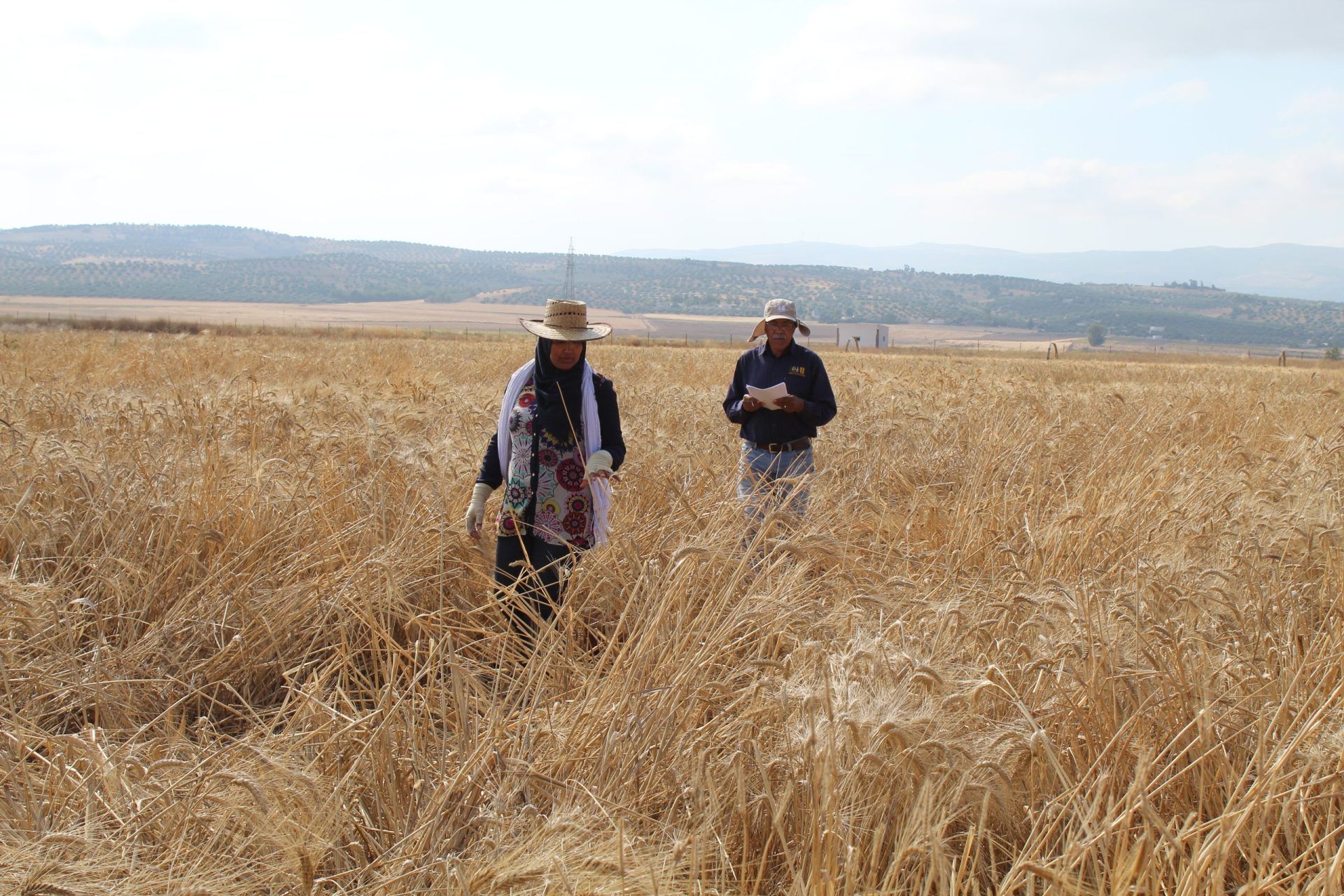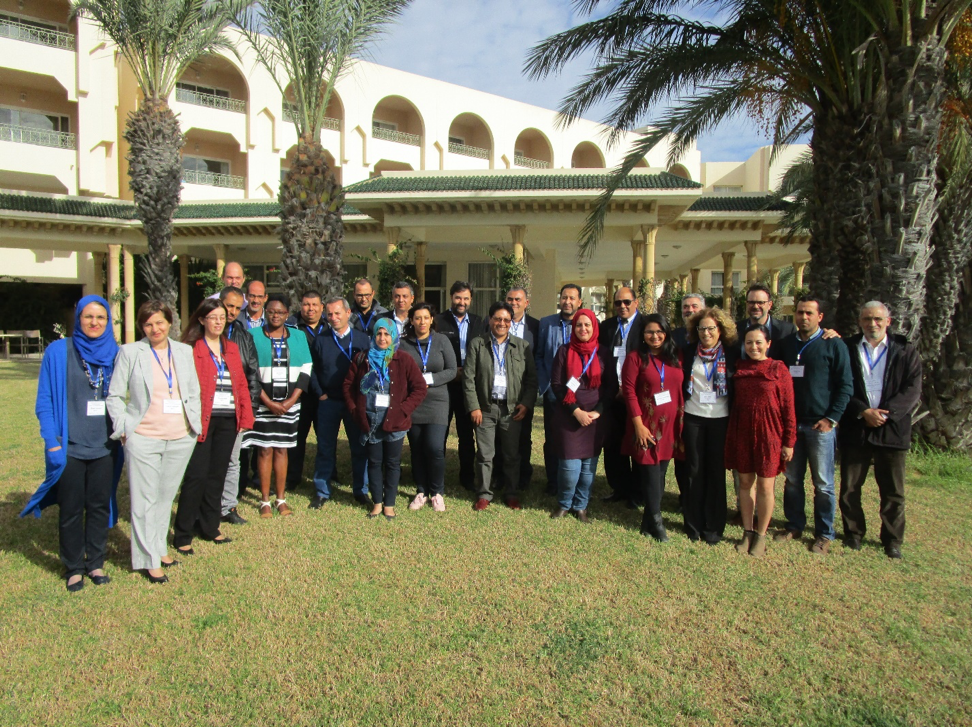Location: Tunisia
Russia-Ukraine conflict and global food security
For the past month, researchers from the International Maize and Wheat Improvement Center (CIMMYT) have analyzed the expected impacts of the Russia-Ukraine war on global food security.
The war in Ukraine and the sanctions against Russia will disrupt wheat supply chains, fertilizer exports and other components of food systems. Their combined effect, along with other factors, could unchain a major food security crisis as well as increased inequality.
Explore our analysis and coverage on major media outlets and journals. To get in touch with our experts, please contact the media team.
CIMMYT scientists have also made available a summary of key facts and figures about the impact of the Russia-Ukraine war on wheat supply (PowerPoint, 32MB): changing patterns of consumption and effect on food prices, geographic export supply concentration, global wheat imports, and specific vulnerabilities particularly in the Global South.
Another food crisis?
The Russia-Ukraine conflict will cause massive disruptions to global wheat supply and food security. Agricultural research investments are the basis of resilient agri-food systems and a food-secure future.
Broken bread — avert global wheat crisis caused by invasion of Ukraine
War highlights the fragility of the global food supply — sustained investment is needed to feed the world in a changing climate, Alison Bentley explains on Nature.
Food is just as vital as oil to national security
A new Bloomberg op-ed urges nations to steer more money to organizations like CIMMYT that are advancing crucial research on how to grow more resilient wheat and maize crops in regions that are becoming steadily less arable.
What price wheat?
Multiple breadbasket failures: Nations must address looming food emergencies
The war in Ukraine, coupled with weather-related disruptions in the world’s major grain-producing regions, could unleash unbearable humanitarian consequences, civil unrest, and major financial losses worldwide, say Sharon E. Burke (Ecospherics) and Bram Govaerts (CIMMYT) on The Boston Globe.
Multiple breadbasket failures: Nations must address looming food emergencies
The war in Ukraine, coupled with weather-related disruptions in the world’s major grain-producing regions, could unleash unbearable waves of displacement, humanitarian consequences, civil unrest, major financial losses worldwide, and geopolitical fragility, says Bram Govaerts, DG of CIMMYT, in a Boston Globe op-ed.

Building resistance in wheat: International collaboration fights Septoria tritici blotch disease
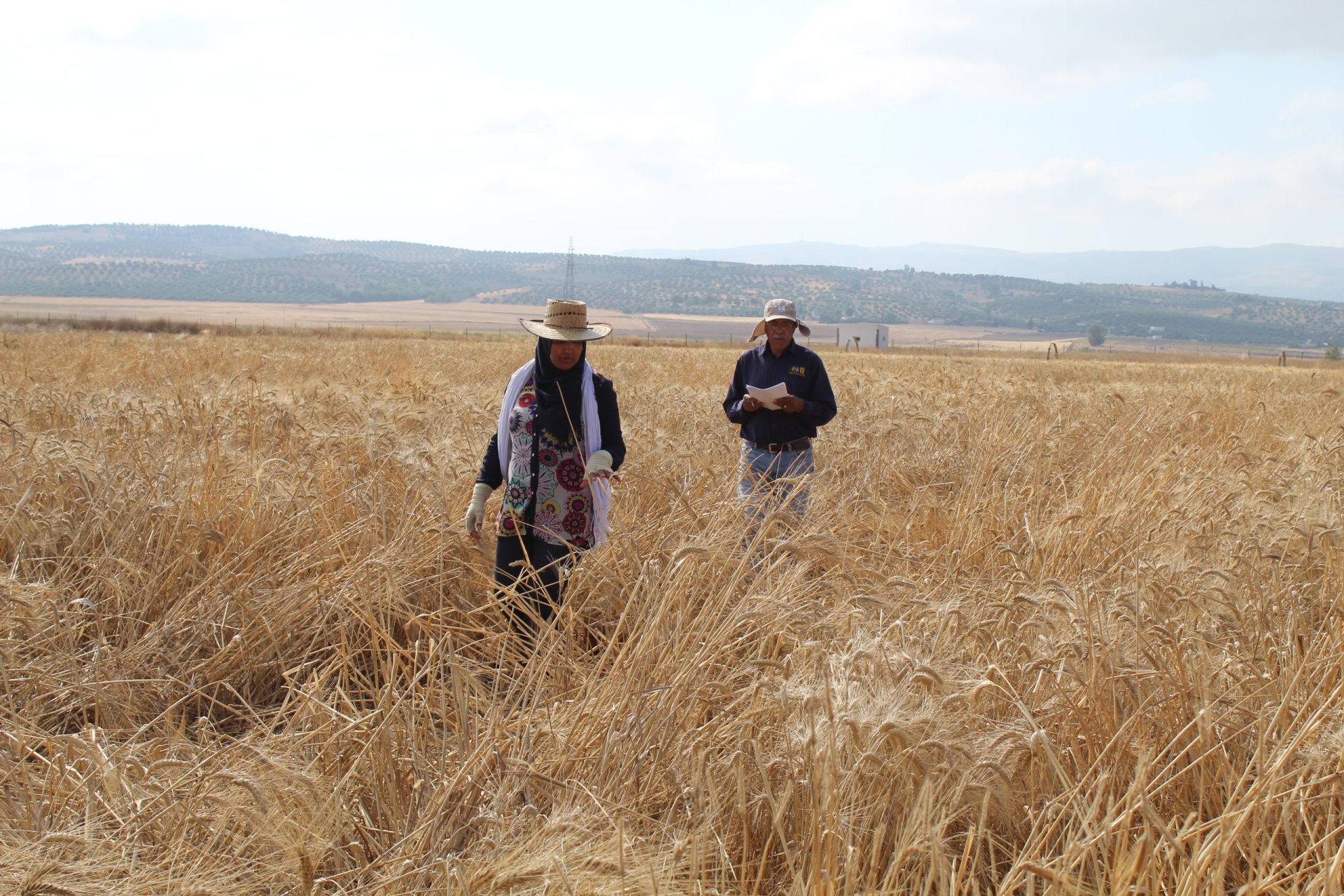
Tunisia has been a major durum wheat producer and consumer since Roman times, a crop used now for couscous, bread and pasta dishes throughout North Africa and the Mediterranean Basin.
However, a persistent disease known as Septoria tritici blotch (STB) has been threatening durum wheat harvests across the country thanks to its increasing resistance to fungicides and adaptability to harsher climatic conditions. The disease, which is caused by the fungus Zymoseptoria tritici, thrives under humid conditions and can cause up to 60% yield loss in farmers’ fields.
To help fight this disease, the International Maize and Wheat Improvement Center (CIMMYT) established the Septoria Precision Phenotyping Platform in collaboration with the Institution of Agricultural Research and Higher Education of Tunisia (IRESA) and the International Center for Agricultural Research in the Dry Areas (ICARDA) in Tunisia in 2015.
The platform aims to accelerate the transfer of STB resistance genes into elite durum wheat lines from national and international breeding programs, particularly CIMMYT and ICARDA breeding programs. Researchers at the platform have tested an impressive diversity of durum wheat lines for resistance to the disease from research institutes across Tunisia, Morocco, Algeria, Mexico, France, Italy, the UK, USA and Canada.
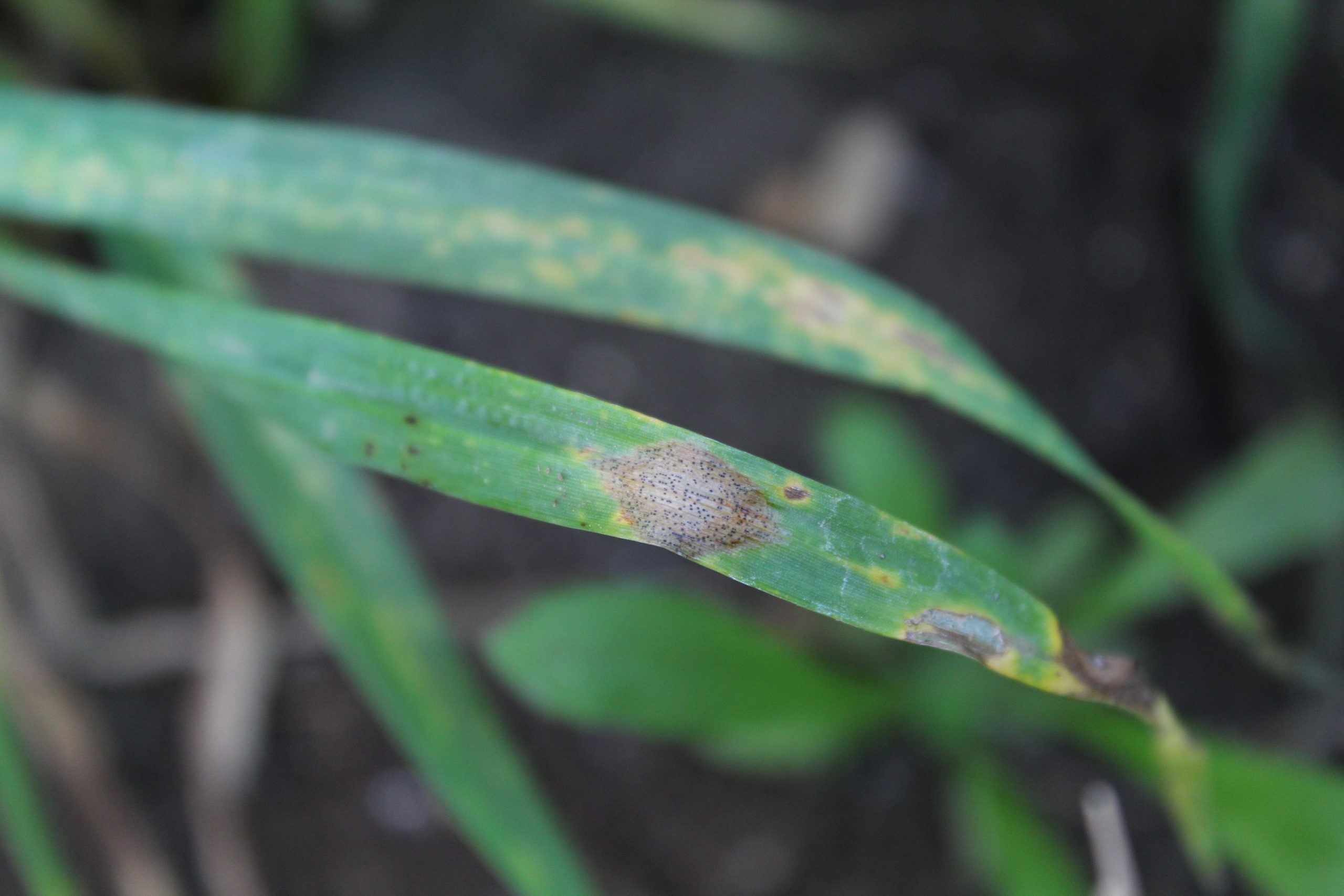
“New and more virulent strains of the pathogen are constantly emerging, which results in previously resistant wheat varieties becoming more susceptible,” said Sarrah Ben M’Barek, head of the laboratory at the Septoria Precision Phenotyping platform.
Field phenotyping – the use of field-testing to identify desired plant traits — is the heart of the platform. Scientists can test as many as 30,000 plots each year for STB resistance.
Evaluations are conducted at two main field research stations managed by the Regional Field Crop Center (CRRGC) and the National Institute of Field Crops (INGC), based at two major hotspots for the disease in Beja and Kodia. This work is complemented by laboratory research at the National Agronomic Institute of Tunisia (INAT) at Tunis.
“The platform plays a critical role in identifying STB resistant wheat germplasm and characterizing the resistance genes they possess. These resistant sources be can further utilized in hybridization schemes by durum wheat breeders worldwide to develop durable resistant varieties,” explained CIMMYT consultant and platform coordinator Amor Yahyaoui.
With the help of data from the platform, breeders hope to combine multiple resistance genes in an individual variety to create a genetically complex “lock” whose combination the fungus will not easily break.
According to Ben M’Barek, the huge genetic diversity in wheat and its ancestors has helped breeders to develop new varieties for almost a century. However, the adoption of new varieties has typically been slow.
Farmers in Tunisia traditionally rely on fungicides to manage the disease. However, with the pathogen recently becoming more resistant to fungicides and more adaptive to harsher climatic conditions, interest in STB resistant varieties is increasing.
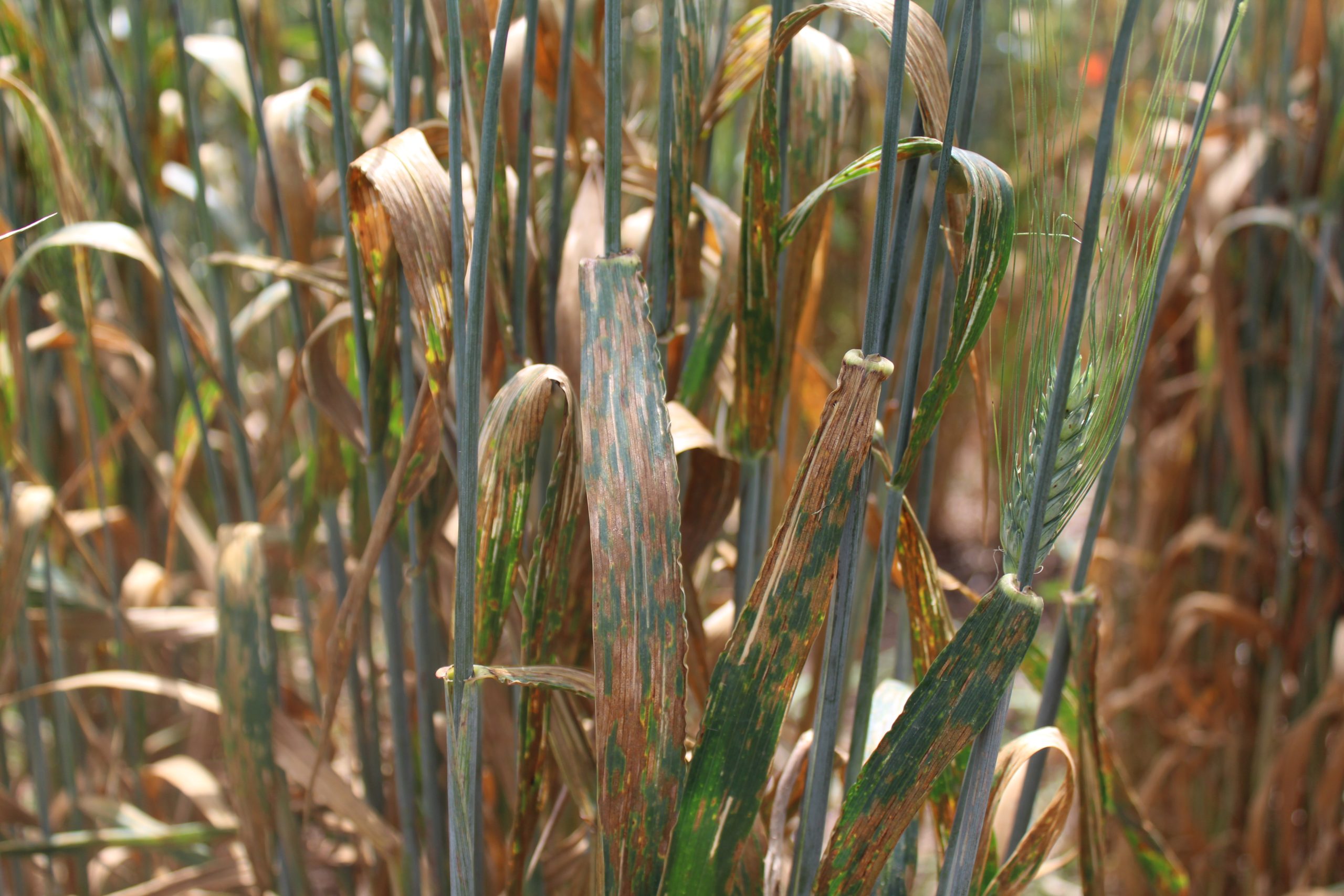
A hub for training and collaboration
The platform is also a hub for training and capacity development for national and international scientists, field research and lab. assistants, students and farmers. It brings together research staff and technicians from different institutions within Tunisia including the CRRGC, INGC, the National Institute of Agricultural Research of Tunisia (INRAT), INAT and the University of Jendouba.
Farmer’s organizations and regional extension services, as well as private organizations such as Comptoir Multiservices Agricoles (CMA), seed and chemical companies also collaborate with the platform. The result is a team effort that has generated a tremendous wealth of data, made only possible through the dedication of Yahyaoui, said Ben M’Barek.
“Spending a few days at the platform each year is a like a crash course on STB resistance. All subjects are covered and great experts around the world come together to discuss all details of this host-pathogen interaction,” said Filippo Bassi, senior durum wheat breeder at ICARDA.
“Sending young scientists to spend some time at the platform ensures that they learn all about the mechanisms of resistance and take them back to their home country to deploy them in their own breeding programs. It is like a true university for STB.”
Yet, the platform still has a lot of work to do, according to Ben M’Barek. Scientists at the platform are now working on raising awareness on crop and pest management such as integrated management approaches amongst farming communities, setting up on-farm field trials and developing disease early warning surveillance.
Next year the platform will provide a unique podium for students, academics and researchers to exchange ideas and research findings on cereal leaf blight diseases. The International Symposium on Cereal Leaf Blights will take place on May 19-21, 2021 in Tunisia. Details can be found here.
The Septoria Precision Phenotyping Platform is led by the International Maize and Wheat Improvement Center (CIMMYT), in collaboration with the Institution of Agricultural Research and Higher Education of Tunisia (IRESA) and the International Center for Agricultural Research in the Dry Areas (ICARDA) and is supported by the CGIAR Research Program in Wheat (WHEAT).

Scaling to new heights in agriculture
How to scale? This question frequently comes up as projects look to expand and replicate results. In order to sustain enduring impacts for projects after their lifetime, agricultural programs are turning to scaling strategies. These strategies look beyond the numbers that are reached within a project and include sustainability and transformation beyond the project context. Methods and tools exist that help anticipate realistic and responsible scaling pathways.
The Scaling team at the International Maize and Wheat Improvement Center (CIMMYT), led by Lennart Woltering, drives the initiative to incorporate scaling principles into existing and developing projects to maximize impact.
Maria Boa recently joined the team as Scaling Coordinator. Last year Boa and Woltering participated in regional meetings on scaling in Morocco, Tunisia and Vietnam, which highlighted the need for better dissemination of information on how to approach scaling, in addition to its benefits.

According to Boa, one of the key messages highlighted throughout these events was that in order for scaling to take hold and be integrated into projects, “…there needs to be a shift in mindset to accept that change is complex and that most projects only address a fraction of the problem.” This is essential in using scaling to effectively support long-term results.
At a workshop in Tunisia organized by ICARDA, IFAD and CIMMYT in November 2018, many participants expressed interest in scaling strategy tools, but were puzzled on how to integrate them into their specific projects. Many determined that they were stuck developing scaling strategies in an outdated framework, or one that strictly focused on using technological innovations. One participant admitted that she was skeptical of scaling perspectives because many did not lie in her field of expertise.
The November 2018 CCAFS SEA Conference on Scaling in Vietnam provided a platform for the sharing and learning of experiences in the scaling world. Some of the key messages from the event included the importance of scaling agricultural innovations taking place in complex systems of agricultural transformation, and the necessity of joint cooperation from all involved stakeholders and their openness to taking on challenges as a way to support sustainable system change.
According to Boa, scaling is a process that heavily relies on strategic collaboration for lasting impact. “Projects often don’t take into account how they’re a part of a larger chain of potential change,” she says.
Already recognized as a sustainable leader within scaling, CIMMYT is looking to strengthen scaling efforts in order to foster a more enduring impact within CIMMYT projects and beyond.

Currently, the Scaling team at CIMMYT is conducting research on the “science of scaling” as it continues to function as a “help desk,” providing support integrating scaling principles in proposals and projects. Its primary role is to consider a project’s scaling needs and guide the development of an informed strategy to leverage efforts and resources. Boa hopes that by integrating responsible scaling approaches early on, projects can better balance the trade-offs associated with change.
Success in scaling is measured by a project’s enduring impact. However, stakeholders need more experience and capacity to see programs through to their end and be willing to monitor them beyond that lifespan. CIMMYT is developing and collecting the tools to support stakeholders with these specific capacities.
Developing a scaling strategy can also bring additional benefits: a discussion about scaling opens the door for raising awareness and fostering actions among different stakeholders towards system change and sustainable impact.

